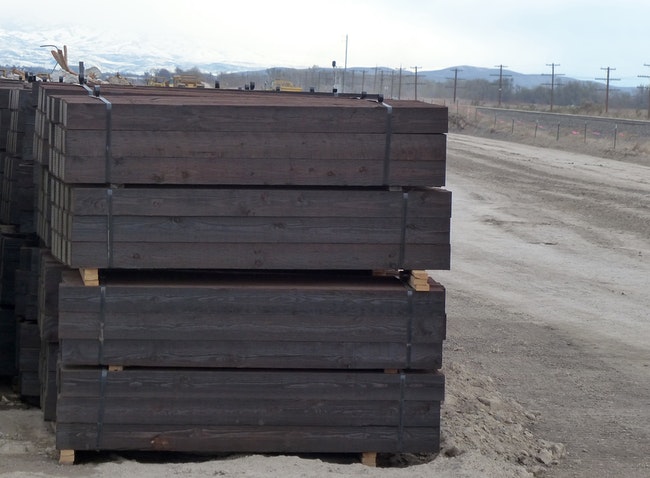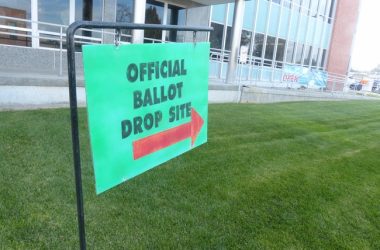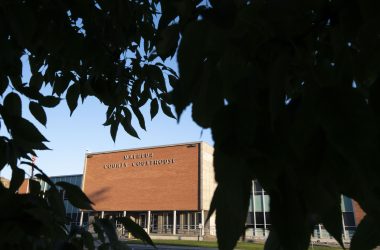UPDATED Oct. 31, 2022
What is it?
The Treasure Valley Reload Center will be a shipping center where Treasure Valley farm products can be unloaded from trucks and loaded onto rail cars. A warehouse and rail spurs are the centerpiece. To start, only onions would move through the center. The center is on former farmland north of downtown Nyssa.
Why is it needed?
Onion producers say they need more predictable rail service from Union Pacific Railroad to move their commodities east. They say rail service will be cheaper and faster than trucking, allowing them to get to market sooner and to cut their costs.
When will it open?
That’s unknown. The center was supposed to open in 2020. There have been delays in getting permits and striking deals with Union Pacific Railroad and Americold, which will run the terminal. Once construction started last year, project leaders planned a grand opening in October 2022. The latest schedule from project leaders said the reload center would now be done in April 2023 – but that appears to be at risk as well. It’s anticipated that onions won’t move out of Nyssa until the 2023 fall harvest.
Who owns it?
The project is owned by the Malheur County Development Corp., a public company set up in 2017 by Malheur County officials. The company has agreed to sell the project for $1 if Americold, contracted to manage the facility, stays on the task for 20 years.
What about the public company?
The Malheur County Court established the company but its operations are controlled by a separate board of directors. The current board includes four people from the onion industry – Grant Kitamura, Kay Riley, Corey Maag, Jason Pearson. Lynn Findley, a state senator, resigned his seat on the board in October. The company’s day-to-day operations until recently had been put in the hands of Greg Smith, a private contractor from Heppner and a state representative.
Who benefits?
The prime winner is the onion industry, where companies expect to pay less to move their onions in a way that improves their bottom line. State officials expect other agricultural interests to use the center but there are no firm plans to do so at the moment. County and state officials say the public benefits because there is less truck traffic on the freeways, reducing pollution, highway repair costs and accidents.
What about new jobs?
Early on, project leaders said the reload center would run year-round and provide the equivalent of seven full-time jobs. No official has provided a new number in five years. As for the onion industry, there has been no projection it will create any new jobs and only the same amount of onions would be grown. Not all onion producers have signed on to use the reload center.
What’s the cost?
The Oregon Legislature gave Malheur County $26 million in 2017. The money is from lottery funds and a new car sales tax created to help cover the costs. The city of Nyssa got $1.7 million in state money in 2021 to provide water service to the center. That hasn’t been enough. Project leaders got an emergency grant of $3 million from the Legislature in September 2022. In a public report on Oct. 25, 2022, project leaders now estimate they need another $8.5 million. That would push the total public investment to an estimated $39 million.
Is my tax money involved?
Anyone buying a new car in Oregon contributes to the project. And Malheur County separately has been paying the cost of the project manager, interest on short-term loans for the project and a few other costs. Taxpayers also are on the hook to repay a big loan taken out by the county to buy the industrial property. And now $3 million more is coming – money that comes mostly from those who pay income tax in Oregon. In late October, project leaders said they hope to tap Malheur County for another $2 million and find other sources to fund completion.
What about the industrial park?
Malheur County owns about 230 acres it plans to develop into the Aracadia Industrial Park, putting the county in debt to do so. A network of paved streets was to be installed as part of the reload center, but that plan has been scrapped for budget reasons. Greg Smith, while serving as the county’s economic development director, was paid to obtain a federal grant to provide millions to develop the park. Federal officials found his proposal “unacceptable” and since then there has been no progress on funding the project. The county did spend $1,900 to erect signs on the farmland promoting the industrial park. Otherwise, county officials say, they have no plan for the park. Smith subsequently quit and county officials are working on a new plan to turn that farmland into industry.
QUESTIONS? If you have questions about the project, send an email to Editor Les Zaitz ([email protected]). Questions may be included in future reports.
SUPPORT QUALITY LOCAL JOURNALISM – Available for $7.50 a month. Subscribe to the digital service of the Enterprise and get the very best in local journalism. We report with care, attention to accuracy, and an unwavering devotion to fairness. Get the kind of news you’ve been looking for – day in and day out from the Enterprise.




